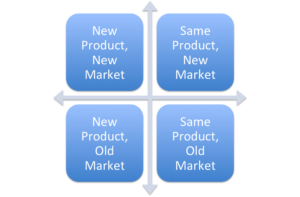
Brandscaping and the Fitness Industry
When they were still in diapers, my 2-year-old daughters would always request the ones with “Big Bird” on them. The images on the diaper didn’t change how effective it was at doing its job, of course.
And, if the paper towels didn’t have a picture of Olaf from “Frozen” on them, a temper tantrum might very well occur – even if any regular ol’ paper towel would’ve gotten the job done just as well.
They adored the Mickey Mouse sippy cups my mother bought them even though they weren’t any better at delivering the beverage than a generic cup.
All of these are perfect examples of Brandscaping, a concept to which I was introduced by Andrew Davis in his outstanding book by the same name.
In its simplest form, brandscaping is an approach to developing partnerships with other brands who also cater to your target market. Davis spends considerable time discussing how Tony Bennett’s resurgence in the past decade has a lot to do with joint ventures with Lady Gaga and the Muppets; they’ve modernized his classic approach to create a new synergy.
As an more applicable fitness industry example, Cressey Sports Performance (baseball strength and conditioning) and New Balance (baseball training apparel and shoes) are a great synergistic fit – and it even led to a limited edition training sneaker.
Referrals to and from physical therapists are another example, and the list could go on to include pitching instructors, massage therapists, meal preparation services, and a host of other complementary services. If we look at the classic “here’s how you can grow your business,” brandscaping is likely the single-best way to grow the “same product, new market” component. Your brandscaping partner recognizes your specific expertise/offering and brings new folks to it. You, in turn, do the same for them. Everybody wins.
Unfortunately, though, a lot of fitness professionals get in their own way and “obstruct” opportunities for brandscaping. A big mistake is definitely trying to be everything to everyone. If you’re training everyone from cardiac rehab patients, to fitness competitors, to basketball players, to powerlifters, chances are that potential partners are going to struggle to see the specific realm in which you’d be a good partner. When you have a really broad collection of offerings, it’s a challenge to market to them. The cardiac rehab patients might hate the internet, the fitness competitors love Instagram, the basketball players are on Twitter, and the powerlifters are on Facebook.
Moreover, some fitness professionals mismanage their web presence, even if they have a specific, marketable niche. As an example, if you train high school athletes, but a huge majority of your social media posts are about beer and partying, that’s going to be a huge turnoff to their parents (who pay the bills). And, if you’re a rockstar when it comes to training middle aged corporate executives, they’re likely going to be turned off if all your social media content is shirtless photos of you from your recreational bodybuilding hobby.
In wrapping up, there are really three huge takeaways for you as you try to grow your business.
First, someone else has your ideal customers. Think about how you can partner with them in a mutually benefical relationship.
Second, your ideal customers or brandscaping partners might not be able to appreciate how good a cross-referral or co-banding relationship with you could be because you keep getting in your way. Think about the image you’re creating publicly for your business or brand.
Third, don’t let your daughters boss you around like mine do to me.
While we’re on the topic of the business of fitness, I wanted to give you a heads-up that my business partner, Pete Dupuis, and I will be offering our Cressey Sports Performance Business Building Mentorship in an online format for the first time. This offering will take place September 22-24. For more information, click here.






